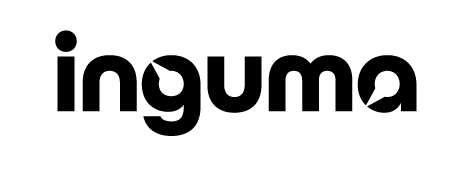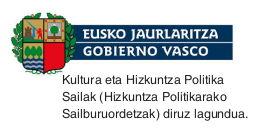Hizkuntzarekin erlazionaturiko online informazioa europar hizkuntza gutxituetako hedabideetan
DOI:
https://doi.org/10.26876/uztaro.130.2024.5079Gako-hitzak:
Online albisteak, Hizkuntza gutxituetako hedabideak, Framing-a: hizkuntzen arteko konparaketaLaburpena
Artikulu honek, lehen aldiz era sistematikoki konparatzailean, hizkuntza gutxituei buruzko online informazioaren bolumen/estaldura eta garrantzia ikertzen ditu Europako bederatzi hizkuntza-komunitate gutxitutako prentsa, irrati eta telebista garrantzitsuenen webguneetan. Ikerketan, halaber, online albisteen framing edo enkoadraketa ere zedarritzen da, hainbat aldagai eta atributuren bitartez: izaera, eduki-tipologia, topos edo foku geografikoa, eta protagonisten profila. Gainera, emaitzak konparatu egiten dira hizkuntza nagusietako hedabide nagusien webguneen online albistegintzarekin. Europako bederatzi hizkuntza gutxituak euskara, galesa, galiziera, irlandera, bretoiera, frisiera, samiera, korsikera eta gaeliko eskoziarra dira.
Deskargak
Erreferentziak
Aalberg, Toril eta Curran, James (2012). How Media Inform Democracy: A Comparative Approach. Routledge. DOI: https://doi.org/10.4324/9780203803448
Bell, Alan eta Holmes, Janet (1995). Language and the Media. Cambridge University Press. DOI: https://doi.org/10.1017/S0267190500002592
Broughton Micova, Sally (2013). Rights vs. reality: minority language broadcasting in South East Europe. Journal on Ethnopolitics and Minority Issues in Europe, 12. lib., 54-79.
Browne, Donald. R. (2005). Ethnic Minorities, Electronic Media and the Public Sphere: A Comparative Approach. In Euricom Monographs. Hampton Press.
Christians, Clifford; Glasser, Theodore. L.; McQuail, Denis eta Nordenstreng, Kaarle (2009). Normative Theories of the Media: Journalism in Democratic Societies. University of Illinois Press.
Cormack, Mike (2016). Problems of Minority Language Broadcasting: Gaelic in Scotland. European Journal of Communication, 8. lib., 101-117. https://doi.org/10.1177/0267323193008001005 DOI: https://doi.org/10.1177/0267323193008001005
Croteau, David eta Hoynes, William (2001): The business of media: Corporate media and the public interest. Pine Forge Press-Sage.
De Vreese, Claes (2005). News Framing: Theory and Typology. Information Design Journal, 13. lib., 51-62. http://dx.doi.org/10.1075/idjdd.13.1.06vre DOI: https://doi.org/10.1075/idjdd.13.1.06vre
Entman, Robert (1993). Framing: Towards Clarification of a Fractured Paradigm. In Denis MQuail (argtz.), MQuail´s Reader in Mass Communication Theory. Sage Publications. DOI: https://doi.org/10.1111/j.1460-2466.1993.tb01304.x
Ferré-Pavia, Carme; Zabaleta, Iñaki; Gutierrez, Arantza; Fernandez-Astobiza, Itxaso eta Xamardo, Nikolas (2018). Internet and Social Media in European Minority Languages: Analysis of the Digitalization Process. International Journal of Communication, 12. lib.,1.065-1.086.
Goffman, Erving (1974). Frame analysis: An essay on the organization of experience. Harvard University Press.
Gorter, Durk; Hoekstra, Jarich F. eta Jansma Lambert.G. (argtz.) (1989). Fourth International Conference on Minority Languages, Vol. 1: General Papers. Multilingual Matters.
Hogan-Brun, Gabrielle eta Wolff, Stefan (argtz.) (2003). Minority languages in Europe: Frameworks, Status, Prospects. Palgrave MacMillan. DOI: https://doi.org/10.1057/9780230502994
Jones, Elin Haf Gruffydd eta Uribe-Jongbloed, Enrique (argtz.) (2012). Social Media and Minority Languages: Convergence and the Creative Industries. Multilingual Matters. DOI: https://doi.org/10.21832/9781847699053
Kenney, Sally. J. (2003, online argitaratua 2008an): Where Is Gender in Agenda Setting? Journal of Women, Politics & Policy, 25. lib., 179-207. DOI: https://doi.org/10.1080/1554477X.2003.9971014
Levy, David A. eta Nielsen, Rasmus K. (argtz.) (2010). The Changing Business of Journalism and its Implications for Democracy. Reuters Institute for the Study of Journalism, University of Oxford.
Iyengar, Shanto eta Simon, Adam (1993). News Coverage of the Gulf Crisis and Public Opinion: A Study of Agenda-Setting, Priming, and Framing. Communication Research, 20. lib. https://doi.org/10.1177%2F009365093020003002 DOI: https://doi.org/10.1177/009365093020003002
McQuail, Denis (2000/1983). McQuail’s Mass Communication Theory (4. ed., 2002an berrinprimatua). Sage.
Mitchelstein, Eugenia eta Boczkowski Pablo. J. (2009). Between Tradition and Change: A Review of Recent Research on Online News Production. Journalism, 10. lib. https://doi.org/10.1177/1464884909106533 DOI: https://doi.org/10.1177/1464884909106533
Moores, Shaun (2016). Texts, readers and contexts of reading: developments in the study of media audiences. Media, Culture and Society, 12.lib. https://doi.org/10.1177/016344390012001002 DOI: https://doi.org/10.1177/016344390012001002
Moring, Tom (2007). Functional Completeness in Minority Language Media. In Mike Cormack eta Niam Hourigan (agrtz.), Minority Language Media: Concepts, Critiques and Case Studies (17-33. or.). DOI: https://doi.org/10.21832/9781853599651-002
Moring, Tom eta Dunbar, Robert (2008). The European Charter for Regional Or Minority Languages and the Media. Council of Europe Publishing.
Nordic Information on Gender (NIKK), Nordicom and Norden (2014): Gender Equality in the Nordic Media. In Fact sheet from Nordic Gender & Media Forum 2014. https://www.gu.se/sites/default/files/2020-06/2014-Factsheet-NIKK-Nordicom-Gender-Media.pdf
Riggins, Stephen H. (argtz.) (1992). Ethnic minority media: an international perspective. Sage Publications. DOI: https://doi.org/10.4135/9781483325309
Sádaba-Garraza, María Teresa (2001). Origen, aplicación y límites de la «teoría del encuadre» framing en comunicación. Comunicación y Sociedad, 14. lib.,143-175. DOI: https://doi.org/10.15581/003.14.36373
Scheufele, Dietram A. (2000). Framing as a Theory of Media Effects. Journal of Communication, 49. lib., 103-122. DOI: https://doi.org/10.1093/joc/49.1.103
Sjøvaag, Helle eta Stavelin, Eirik (2012). Web media and the quantitative content analysis: Methodological challenges in measuring online news content. Convergence: The International Journal of Research into New Media Technologies, 18. lib. https://doi.org/10.1177/1354856511429641 DOI: https://doi.org/10.1177/1354856511429641
Simpson, Paul (1993). Language, Ideology and Point of View. Routledge. DOI: https://doi.org/10.4324/9780203312612
Schlosberg, Justin (2016). Media Ownership and Agenda Control: The Hidden Limits of the Information Age. Taylor and Francis. DOI: https://doi.org/10.4324/9781315766164
Talbot, Mary (2010). Language and Gender. Polity Press (2. edizioa).
Van Dijk, Teun. A. (1987). News analysis: Case studies of international and national news in the press. Lawrence Erlbaum.
Van Dijk, Teun. A. (1991). News as discourse. Routleldge.
Van Leeuwen, Theo Jacob (2009): Discourses of identity. Discourses of identity, 42. lib., 212- 221. https://doi.org/10.1017/S0261444808005508 DOI: https://doi.org/10.1017/S0261444808005508
Zabaleta, Iñaki; Gutierrez Arantza; Ferré Pavia, Carme; Fernandez, Iñaki; Urrutia, Santi eta Xamardo, Nikolas (2013). Website Development and Digital Skill: The State of Traditional Media in European Minority Languages. International Journal of
Communication, 7. lib., 1.641-1.666. https://doi:1932–8036/20130005
Zabaleta, Iñaki; Ferré Pavia, Carme; Fernandez-Astobiza, Itxaso; Urrutia Izagirre, Santi; Gutierrez-Paz, Arantza eta Xamardo, Nikolas (2015). El efecto de la digitalización en la financiación de los medios en lenguas minoritarias: diez casos europeos. Palabra clave, 18. lib., 131-155. https://doi.org/10.5294/pacla.2015.18.1.6 DOI: https://doi.org/10.5294/pacla.2015.18.1.6
Lizentzia
Copyright (c) 2024 Iñaki Zabaleta Urkiola, Tania Arriaga-Azkarate , Gentzane Martinez de Osaba Ruiz

This work is licensed under a Creative Commons Attribution-NonCommercial-ShareAlike 4.0 International License.




















